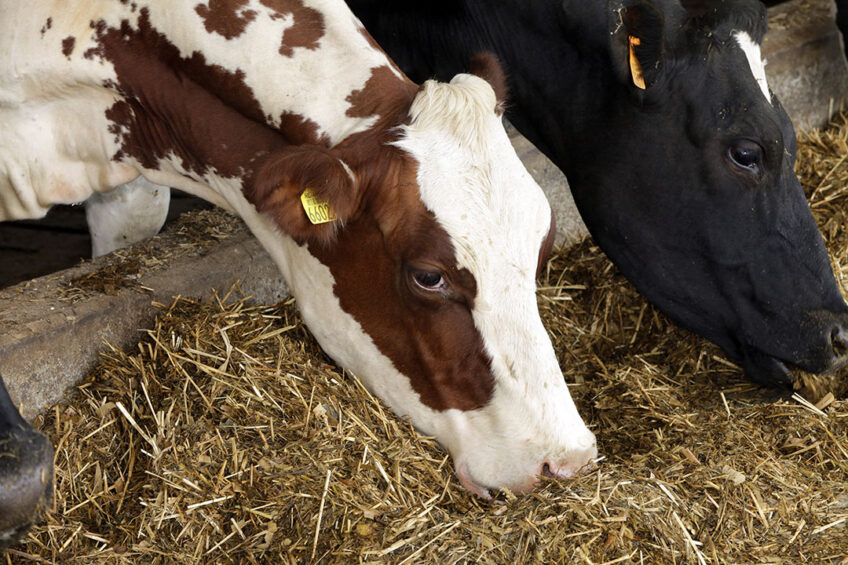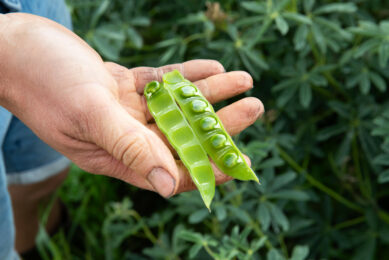Feeding microbes to reduce feed costs and boost profits

Crude protein makes up an important proportion of a dairy cow’s diet, but a high crude protein level results in high ration costs, low nitrogen efficiency, and high milk urea. It also has a negative impact on reproduction. Cows with high milk urea before insemination are 2.4 times less likely to get pregnant than cows with low milk urea.
It is now understood that a cow does not have a requirement for crude protein or rumen undegradable protein (RUP) and that nutritionists must feed both the cow and the microbes to optimise protein production.
Cows, like all mammals, need amino acids, which are mostly gained from microbial protein produced by microbes in the rumen, and from RUP. A cost-efficient way is the supplementation of amino acids in a rumen-protected form.
The rumen of a cow contains billions of bacteria, protozoa, and fungi. These microbes require rumen degradable protein (RDP) which they use to synthesise microbial protein.
The most limiting AAs in a dairy cow’s diet are methionine – which 60 years of research shows to be most limiting – as well as lysine and histidine.
Calculating rations
Evonik developed its own ration calculator 30 years ago as existing formulation models did not include AAs. The idea of AA balancing was first introduced in the late 1980s. In the early 1990s, the French system started to calculate methionine and lysine. The latest release is the Systali software which can formulate up to 16 AAs.
Other European models like the British, Nordic, and Dutch systems followed in the early 2000s. The US model also incorporates AAs, so now most models do.
We appreciate the developments in ration formulation and that the AA balancing concept is now widely accepted. The models calculate differently in terms of requirement settings and predicted nutrient supply from a ration.
In an earlier project, we compared most ration evaluation systems on their assumptions for AA requirements and predictions for AA supply. One of the advanced and popular systems is the Cornell model (CNCPS). We use this model, in addition to our own software, to better serve customers with local formulations and how they compare to others with respect to nutrient supply.
Figure 1 – The Amino Acid Balancing (AAB) concept.

In the Amino Acid Balancing (AAB) concept, the shortest stave of the barrel represents the most limiting AA. In the example shown, that is methionine (Met). The barrel at the top shows a regular feed approach which is often imbalanced. The deficiency shown limits performance and leads to an oversupply of the other AAs. These AA are not needed at these levels and are excreted as urea.
In the right hand barrel, the protein intake has been increased to raise the level of Met, but this approach remains inefficient as there is also an oversupply of the other amino acids.
In the barrel on the left, supplementing the Met and taking out some of the dietary protein reduces the surplus AAs, and brings a cow closer to optimal nitrogen efficiency.
Implementing Amino Acid Balancing
Feed variation can occur for many reasons, but about 2/3 are caused by raw material disparities. The challenge is that growing conditions for crops and forages varies from year to year, and between regions. That means crop quality is different as well. That applies even more to forage, like grass silage, for example.
Figure 2 – Variation in raw material protein and lysine contents (global wheat 2020).

Click here to enlarge this figure
The protein content varies from less than 8 to above 18% in the example in Figure 2. The AAs, in this case lysine, also vary. This shows the importance of analysing raw materials when accurately formulating rations, to avoid high safety margins or to risk performance.
Working with laboratories around the world, NIR is a quick and efficient way for customers to analyse feed ingredients they are using in feed formulations. The best systems are built on a wealth of experience, have highly accurate calibrations based on wet chemistry, with a deep understanding of what it takes to run a high-quality NIR service. They also have a wide analysis scope and include forages, such as corn, alfalfa, and grass silages.
Mobile services help to bring the lab to wherever it is needed. Many samples can be tested on farms with these systems.
Once the data for the feed ingredients have been established, a formulation tool is required, such as AMINOCow. This can help adjust ingredient levels, reduce protein contents, and ensure AA balancing. This results in increased milk yields, reduced cost, and lower nitrogen emissions.
A better balance
A low crude protein ration comes at a lower cost with higher nitrogen efficiency, bringing health benefits and improving reproductive performance while ensuring the dairy cow’s production process is more sustainable, financially and environmentally.
Evaluating the cost-effectiveness of rumen-protected amino acids
1. Check the AA content
2. Check the extent to which the product is protected from degradation in the rumen
3. Check the level of AA that is available for absorption in the intestine
4. Check the physical and chemical stability – how does it cope with being mixed, handled, and transported in the final feed mix
5. Check the product price using the previous parameters
Author:
Claudia Parys, technical head of the ruminant team at Evonik Animal Nutrition
Join 13,000+ subscribers
Subscribe to our newsletter to stay updated about all the need-to-know content in the dairy sector, two times a week.










